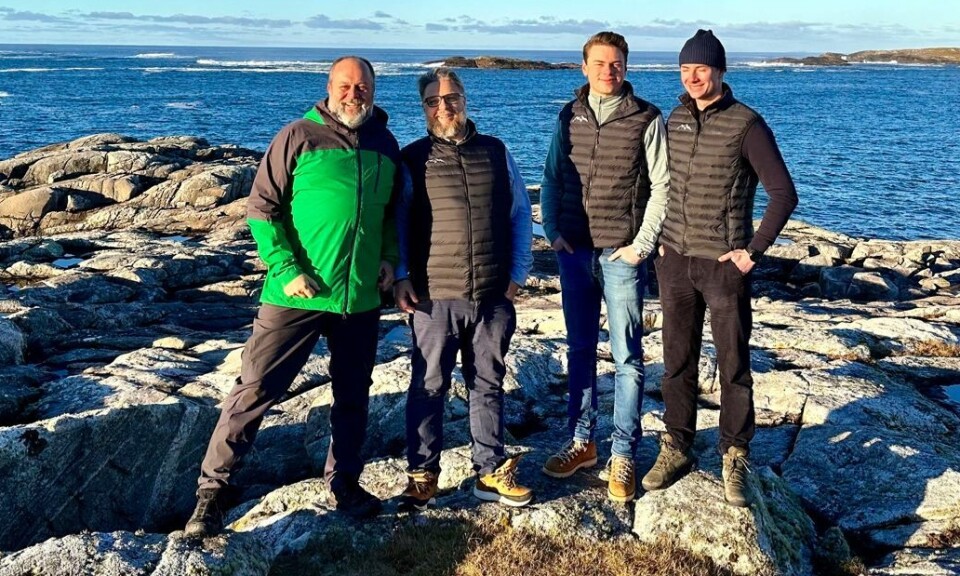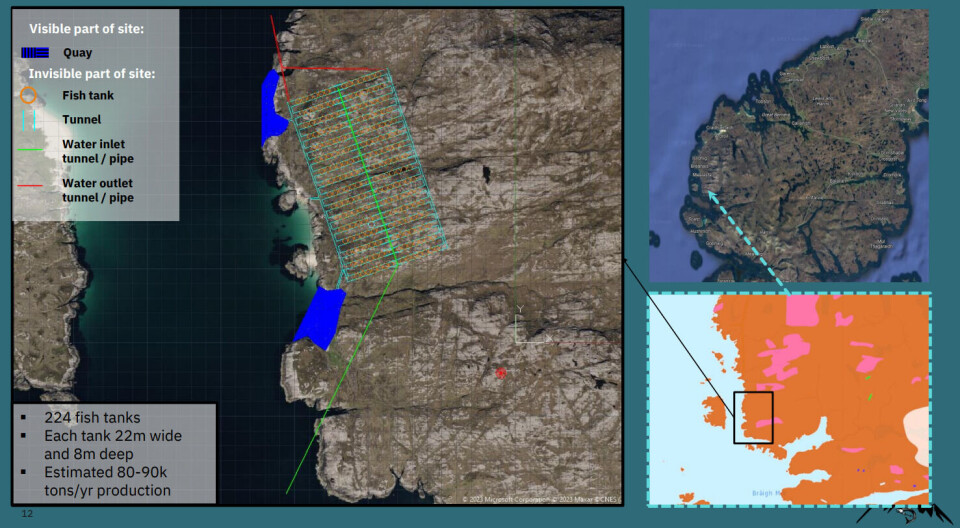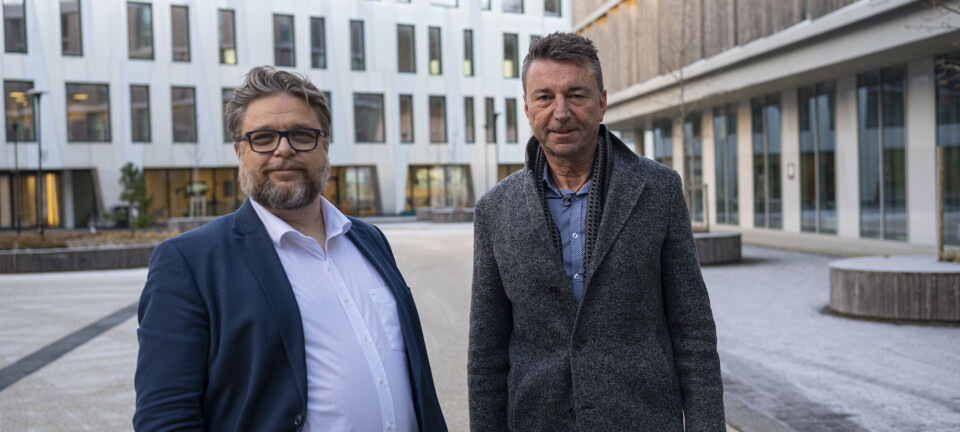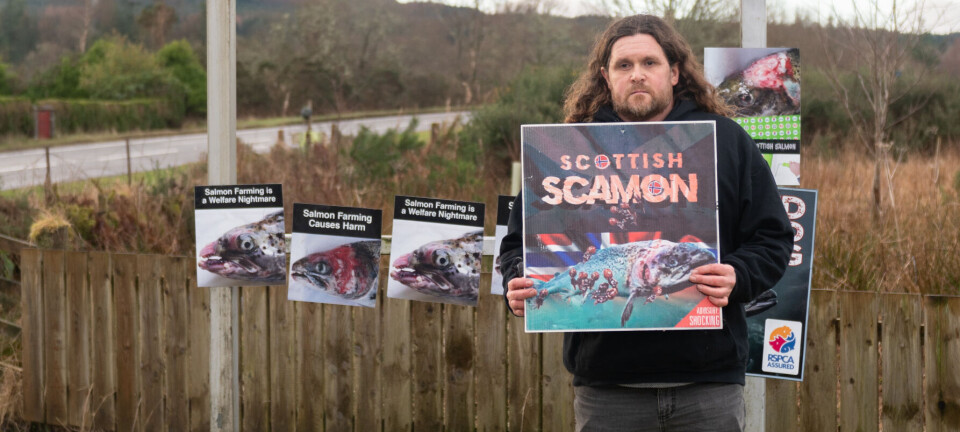
Norwegian Mountain Salmon: some questions answered
Bård Hjelmen, chief executive of the company planning a 90,000-tonne fish farm in a Scottish mountainside, gives Fish Farming Expert more information about the project
Norwegian Mountain Salmon (NMS) intends to excavate large
tunnels to house either a hybrid recirculation / flow-through or full flow-through farm that would produce
up to 90,000 tonnes (round weight) of fish a year in tanks, either at Mealista
in the Uig area of Lewis or at an unnamed location in Shetland.
The project is based on a plan NMS has for a 25,000-tonne underground fish farm on the island of Utsira off the coast of southwest Norway.
A presentation document setting out the concept for the Utsira site and the company’s Lewis site was shown to Comhairle nan Eilean Siar (Western Isles Council) and has recently been made public.
A very early stage
But while the document gives a good overall explanation of the concept, it is short on detail about the Lewis plan. This, says NMS chief executive Bård Hjelmen, is because the project is in its infancy.
“The investigations around the Lewis location are in a very early stage – and we have not decided whether to proceed with this location,” stresses Hjelmen when answering questions from Fish Farming Expert.
Asked whether NMS would widen the very narrow road to the Mealista site, he says a wider road wouldn’t be required for production purposes but that having suitable access for emergency vehicles is part of the concept for NMS sites.
“We have conducted a very thorough and comprehensive impact assessment at the Utsira location,” Hjelmen explains. “Furthermore, we have designed the concept for NMS based on this location; in Norway there are few places more inaccessible than Utsira. The roads there are not built for heavy transport.
14-day weather window
“So, in our concept, we rely on logistics to and from the facility to take place by boat – and at Utsira we account for a 14-day weather window (that it can go up to 14 days without a boat being able to reach the NMS dock due to the weather).
“However, even though we do not need a road connection for the daily operation of the facility, the ROS (risk and vulnerability analyses) and the impact assessment at this location show that we need a road all the way to the facility, primarily related to factors such as fire and rescue. The road is then dimensioned similarly to the roads elsewhere on the island – with the exception that gradients and angles are in accordance with the requirements for fire trucks to be able to access.
“At the Utsira location, we received assistance from local residents on the island to form a picture of what the weather window for the location could be early on – later backed up by wave analysis and advanced calculations performed by Norconsult (one of Norway’s largest consultancy firms). The more scientific investigations largely confirm what the locals had been able to observe over many years.”

Geology
The NMS presentation document indicates that the Lewis facility, which would be built in phases, would have an eventual production capacity of 80,000-90,000 tonnes of salmon annually, which is almost half of the Scottish marine salmon farming sector’s current output.
That estimate is for whole fish. Once the fish have been gutted that volume would be reduced by roughly 10%.
“What the final production might turn out to be will depend on several factors,” says Hjelmen. “In addition to operational considerations, factors such as the quality of the outlet location (with adequate dispersion of water) will be crucial – as well as the geology of the mountain both onshore and offshore, which is relevant to the size of the mountain caverns that can be built and the intake water solution. On Utsira, the water will be directed through a T5 (5m x 5m) tunnel for intake.”
Construction phases
The number of phases of construction on Lewis has still to be decided. The plant would be based on similar technology to that used by Norwegian land-based farmer Salmon Evolution, although its farm is above ground. Salmon Evolution’s completed first phase has capacity for approximately 8,000 gutted weight tonnes a year and the second phase currently being constructed will be the same. A 16,000-gwt third phase will take capacity to 32,000 gwt per year.
“At the Utsira location, we are planning for two phases, with the first phase being 8,000 tonnes. Initially, we are considering three phases at the Lewis location, but it is still uncertain how the phases will unfold and whether three phases represent the correct scaling,” says Hjelmen.
Housing
The plan for both Utsira and Lewis, if it is chosen, includes housing on site, so how important is it to get permission for that?
“The experience from Utsira shows that housing is an important part – also because here we had to consider permanent housing rather than planning for a large temporary construction camp. Building temporary structures incurs lasting environmental impacts,” answers Hjelmen. “We also believe that creating a good living environment near the facility will be important.
“However, the signal from local authorities is that on Lewis, commuting long distances to work is not unfamiliar. So, the need to build housing does not arise here as a requirement from local authorities, as it did in Utsira. Rather, NMS believes it will create a better living and working environment if this is included in the project.”
Harvest arrangements
The NMS presentation to Comhairle nan Eilean Siar indicates that the Mealista farm would harvest 1,720 tonnes of salmon per week, some of it "slaughtered locally". Does that mean NMS will slaughter on site, or elsewhere? And will NMS use the Norwegian Gannet factory ship? Trient AS, a Norwegian salmon exporter that owns a 50% stake in the vessel, is listed in the presentation as a strategic owner of NMS.
“It’s too early to state what the slaughter logistics will be,” says Hjelmen. “We have available competence on the matter in our team. And we are sure that it’s possible to create a good concept for slaughter and logistics to the market – but it is premature to specify what it will entail.
“Our company are committed to ensuring the highest possible animal welfare and to embracing circular solutions with the lowest possible footprint. Therefore, we are inclined to engage with companies and partners who share this mindset.”
Sludge handling
Another important question is: what will happen to the sludge? It has been reported that NMS expects to produce 80,000 tonnes of sludge a year at Utsira, and the Lewis – or Shetland – site would have around three times that volume of waste.
“At the Utsira location, our concept is to dry the sludge and then convert it into biochar,” says Hjelmen, whose company has signed an agreement with pyrolysis technology provider Norwegian Green Tech.
“The reason we chose this solution was once again to reduce the footprint on both the solution and the operational logistics. If we should go for the Lewis location, and use the same approach there, one can assume that the end product of the sludge process will yield approximately 5,000 tonnes of biochar. At the Utsira location, the end product volume is so low that the most environmentally friendly option here would be to transport it off the island by truck. With 5,000 tonnes of biochar, using a boat for transportation would likely be the most environmentally friendly option at Lewis.”
Power supply
Another obstacle to be overcome is electricity supply on Lewis. NMS’s energy requirement – primarily for pumping water, and also for feeding, sludge treatment, oxygen production, and moving of fish – is estimated at 50 megawatts at peak consumption periods and 34MW at average consumption.
“We are receiving assistance from local authorities and their regional contacts regarding this issue – based on this, we believe it is manageable,” says Hjelmen. “However, this is clearly one of the aspects we must have good control over before deciding to proceed with this location. What is clear is that as of now, the infrastructure does not exist. We have dealt with the exact same issue at the Utsira location – the solution there is to lay two new 22kV cables from the mainland.”
Asked if NMS has yet spoken to regulators such as the Scottish Environment Protection Agency, Marine Scotland, and the Fish Health Inspectorate, Hjelmen says the company has been in contact “with several sector authorities”.
Shetland or Lewis?
If NMS was to choose Shetland instead of Lewis, would the capacity be the same or do the characteristics of the site mean that the farm would have a different volume?
“The potential capacity on Shetland is assessed to be lower,” says Hjelmen. “This is not due to the availability of water or the expected quality of the outlet location, but rather due to the anticipated geology. In both areas, there are rock types suitable for tunnel and cavern construction. However, on Shetland, the area where good rock is expected to be found with high certainty is smaller.
“Nonetheless, specific investigations will need to be conducted at both locations before the quality of the rock is precisely known. But the geological foundation is good for both locations. In general, tunnels and caverns can be built in almost any type of rock, but the development cost is significantly different in poor-quality rock, considering expenses such as rock bolting (rock stabilisation) and grouting.
“At the Utsira location, these investigations revealed highly competent rock, with ‘day rock’ only 2-3 metres deep before reaching hard, good-quality rock.”














































































